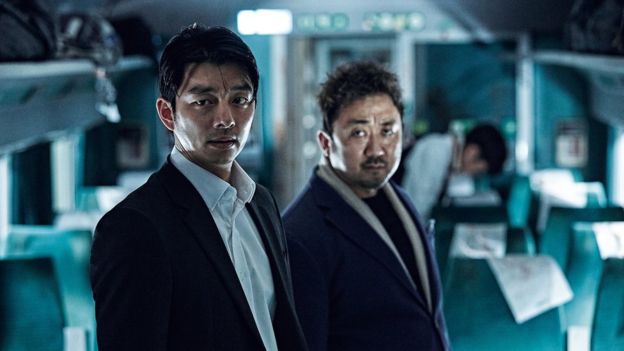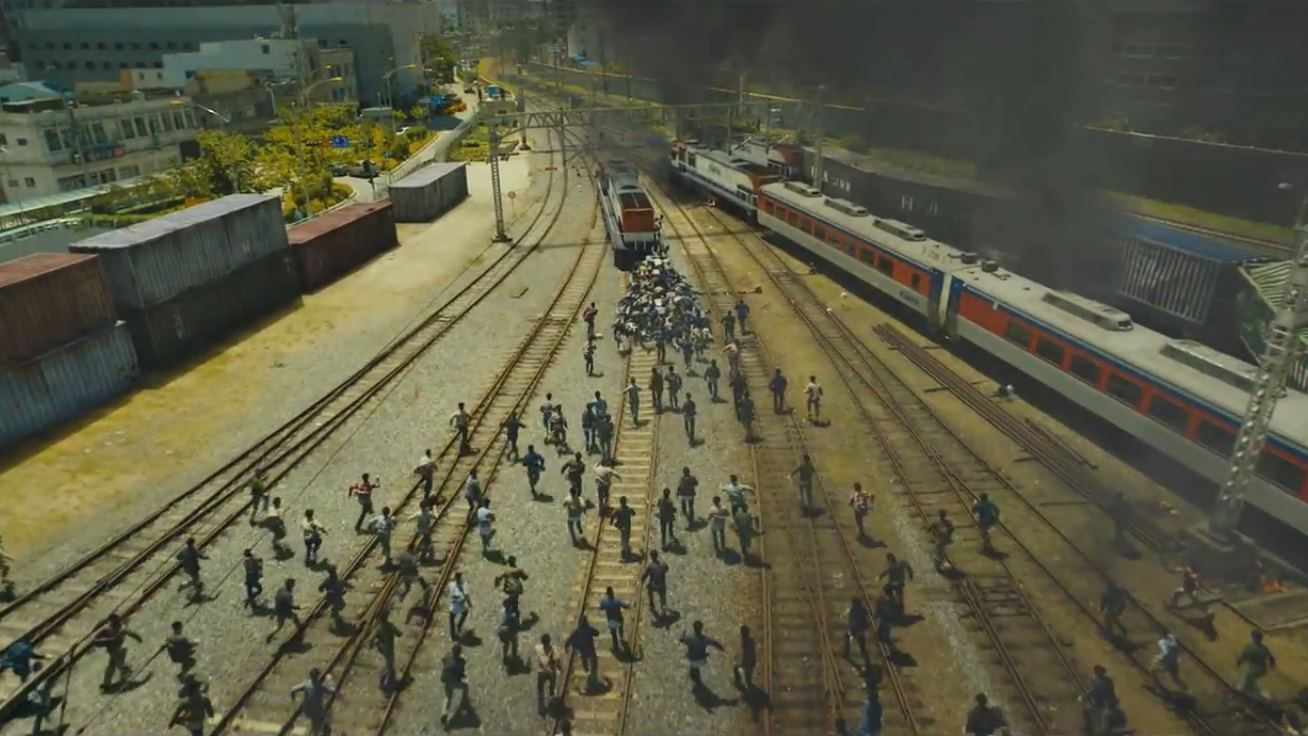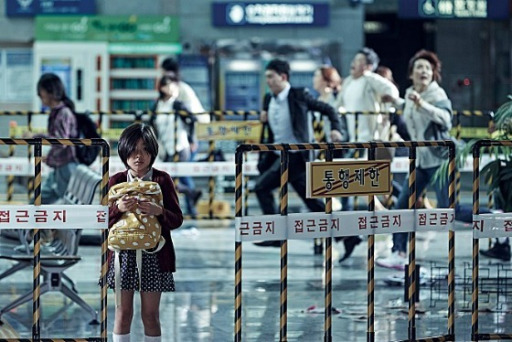6. Unexpected humor

Zombie films frequently feature comic moments, particularly through the way the creatures move and act. “Train to Busan”, however, takes it a step forward, as the humor in the movie actually derives from the human characters. This trait is mainly achieved through Ma Dong-seok’s character, Sang-hwa.
Ma manages to present a number of comedic episodes and his physique (he used to be an MMA trainer) makes his “bloopers” utterly hilarious. However, the funniest moment in the film, and the one that stands as a clear paradigm of the nature of the movie’s humor, features Seok-woo. As he calls his mother to see if she is well, she is zombified, but still whines about her daughter-in-law.
Overall, Yeon Sang-ho’s use of humor does wonders for the film, as hilarious scenes frequently substitute the agonizing ones, keeping the audience’s attention from wavering even for a minute.
7. Great acting

The acting element in zombie movies is usually on a very low level, since the genre tends to focus on the action and the creatures rather than the actual actors. However, Yeon Sang-ho used a different tactic, since the film also features much drama and the occasional comedy, which demands good acting, at least to some degree.
In that fashion, Gong-you is quite good as Seok-woo, the detached executive that has been ignoring his family for years and now has to make up for it. The fact that he is not completely good, particularly when his and his daughter’s survival are at stake, adds another interesting layer in his character, and he is very convincing in that aspect.
Ma Dong-seok as Kim Soo-an holds the most entertaining role in the film, being great in the dramatic, comic, and action sequences, as his presence always seems to elevate the film. Kim Su-an as Seok-woo’s kid daughter is also great, in a very mature role for a child that avoids the usual standards of similar roles that just demand cuteness.
Kim eui-sung as Yong-suk is impressive as the definite villain of the film, as he portrays a truly despicable human being that is actually even worse than the zombies.
8. Great editing

One of the most important aspects of an action film is its editing. Yang Ji-mo does a great job in “Train to Busan”, as he retains a steady and fast rhythm throughout its duration, while he occasionally inserts footage that help the film become more impressive. Two sequences truly highlight his work. The first one includes the scenes where the fighting in the light repeatedly gives its place to the ones in the darkness, where the zombies stay still, and vice versa.
The second sequence is the one that switches from Kim-soo being killed as he tries to hold off the creatures, while the rest of the “gang” try to enter the safe wagon, against the wills of those already in it.
Furthermore, by frequently switching action scenes with non-action ones in an almost equal ratio, Yang keeps the film from either becoming an action flick or a melodrama, while the comic breaks enhance the entertaining aspect.
9. Lack of zombie clichés

The overwhelming majority of zombie movies include a number of clichés. The first one dictates that a team of humans tries to survive against a zombie outbreak. In “Train to Busan”, however, the most significant danger derives not from the zombies, but from other humans who are willing to kill everybody else in order to save their hide.
The second one has this team constantly moving in cities and towns as they search for solace and survival. In “Train to Busan”, the action is set mostly on a train, radically changing the usual setting of the genre.
The third one involves zombies, who are usually slow and actually very easy to deal with. In contrast, the zombies in this film are very fast and even seem to share a collective mind, as it is presented in the scene where all together they try to stop the wagon. Furthermore, the lack of sound, usually presented as the most common way to avoid them, is replaced by a lack of light.
The way the zombies act also strips the film of the usual humor frequently associated with their slowness, and in that fashion, heightens the aspect of agony in the film.
10. Toned down exploitation aesthetics and toned up drama

Given the speed the film moves, it would be very easy for it to become an action flick, simply jumping from one action scene to another. However, Yeon Sang-ho’s direction and script prevents this outcome by inducing a number of elements.
Drama (and occasionally melodrama) is one of them, as is the change in Seok-woo’s attitude, a genuinely humanistic concept. The elaborate script, which retains the agony as it switches genres, is another factor, as is the case with the injections of humor, which occasionally occur through chaos. Both of the ending sequences also move in that direction, with the dramatic element being the dominant one, instead of action.
Author Bio: Panos Kotzathanasis is a film critic who focuses on the cinema of East Asia. He enjoys films from all genres, although he is a big fan of exploitation. You can follow him on Facebook or Twitter.